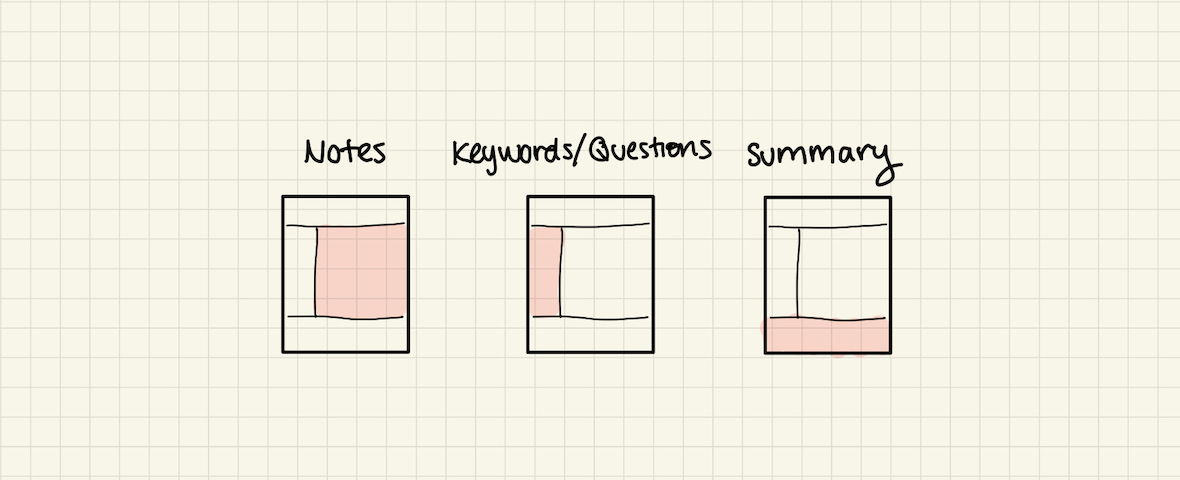Taking Notes
About how to take notes properly
about
writing
About how to take notes properly
1 Cornell Way
1.1 What are Cornell Notes
Cornell note-taking is a popular note-taking method for taking, organizing, and summarizing notes. This method typically results in better overall comprehension.
This note-taking method was invented by Professor Walter Paul of Cornell University in the 1950s.
1.2 How to Take Cornell Notes
It requires very little preparation which makes it ideal for note-taking in class. The page is divided into 4 — or sometimes only 3 — different sections:
- One block at the top of the page
- Two columns
- One block at the bottom of the page
2 Effective Note-Taking Tips for Class
Optimize your note-taking with key strategies:
- Establish structural organization for clarity.
- Actively engage by fostering connections between new and core knowledge, condensing information effectively.
- Enhance retention using visual aids, self-quizzing, and color-coded highlighting.
- Emphasize networking core knowledge, ensuring new information integrates seamlessly with existing concepts for a comprehensive and interconnected understanding.
2.1 Structural Organization
- Choose a dedicated notebook or digital tool for each class.
- Use headers, subheadings, and consistent formatting for a clear and organized structure.
- Date each entry to maintain a chronological record and ease future reference.
2.2 Active Engagement
- Listen actively during lectures, focusing on understanding concepts rather than transcribing verbatim.
- Condense information into keywords and brief phrases to capture essential points.
- Utilize abbreviations intelligently to streamline note-taking without sacrificing clarity.
2.3 Enhanced Retention Techniques
- Incorporate visual aids like diagrams and charts to complement textual information.
- Regularly review and reinforce your notes, converting headings into questions for effective self-quizzing.
- Experiment with color-coded highlighting to emphasize key points and facilitate quicker review.
2.4 Networked Core Knowledge
- Ensure that new knowledge forms cnonections with existing core concepts.
- Cultivate a well-networked core knowledge base to enhance overall understanding.
- Emphasize relationships between topics to create a more interconnected and comprehensive learning experience.
